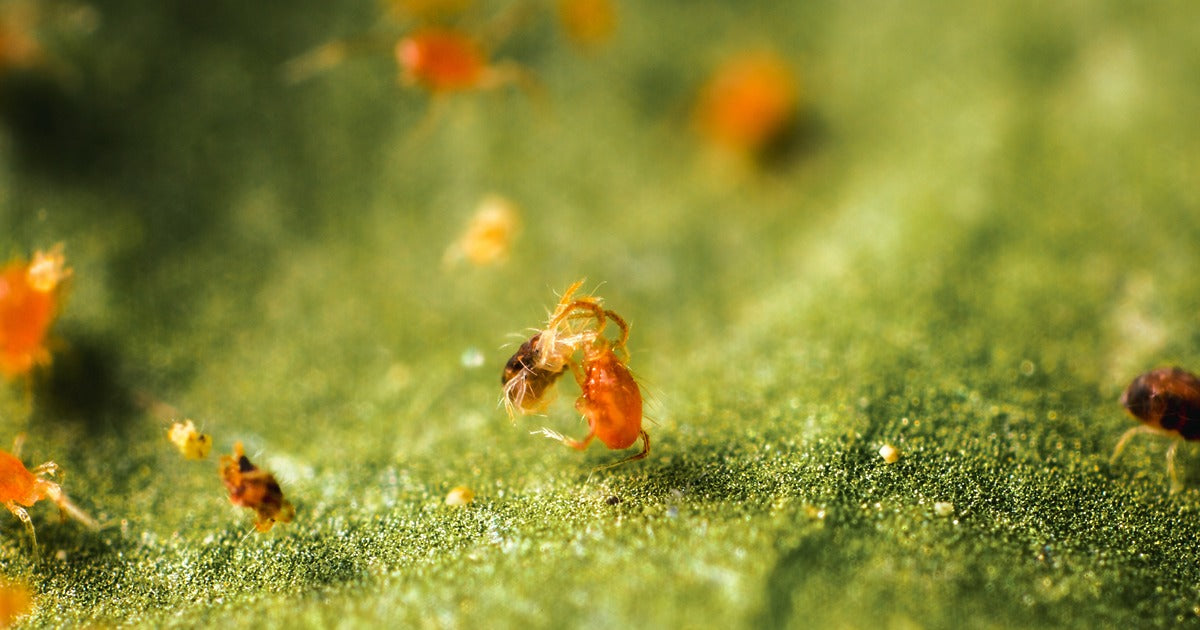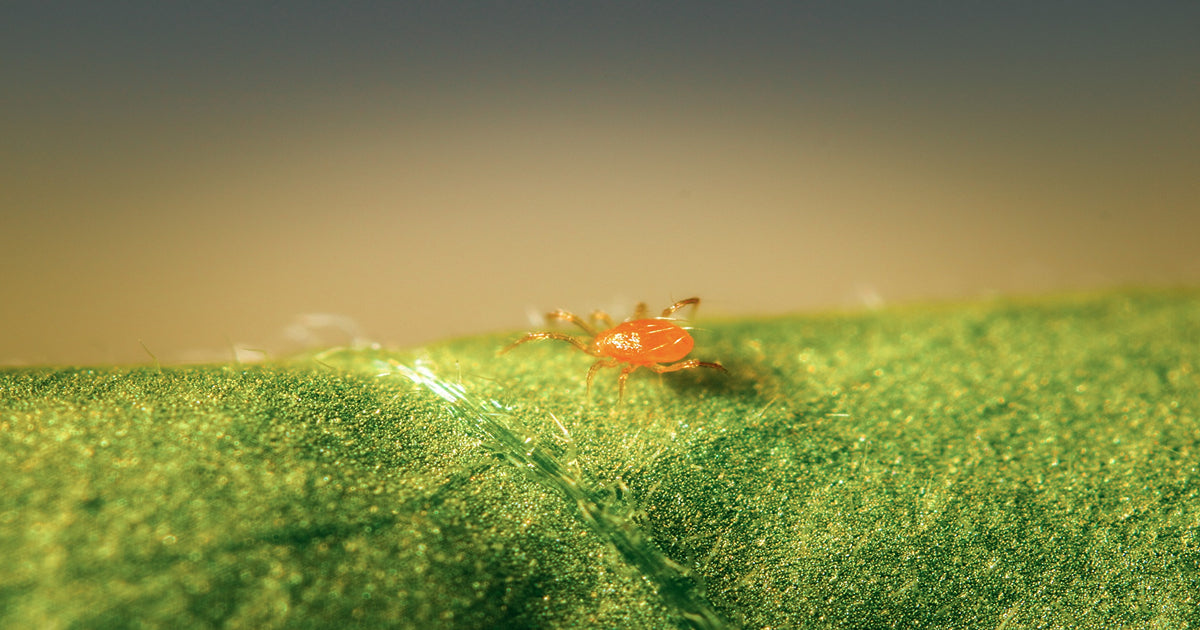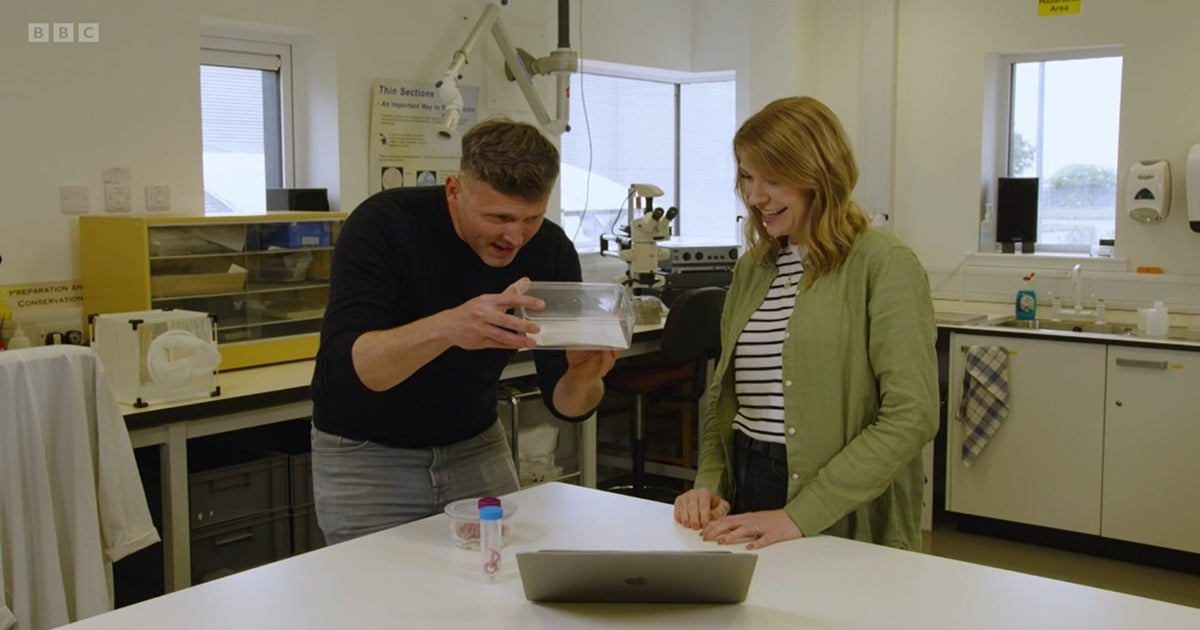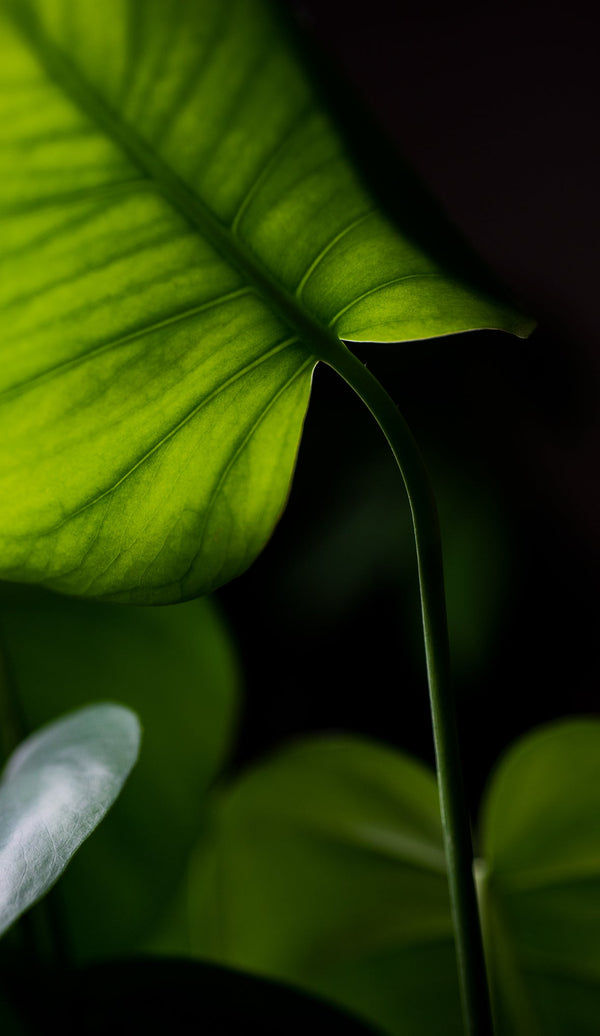
Spider Mites Can Reproduce Rapidly & Should Be Treated Immediately On Identification
Red Spider Mite, often better described as the Two Spotted Mite (Tetranychus urticae) due to the small black dots on their backs, can reproduce very quickly at higher temperatures. At 25°C, Spider Mite populations can double in less than three days. Warm and dry conditions also favour Spider Mite development.

Spider Mite can be identified by their two black spots. Populations can rise rapidly in warm and dry conditions.
The periods in which Spider Mites may appear red is when they are entering or coming out of diapause, this is triggered by shorter day length, falling temperatures, and lack of food. Diapause is when the mites find somewhere to hide and are dormant. During this phase they do not feed, or reproduce, and are not easily located and fed on by predatory mites. Once day lengths and temperatures begin to rise, the Spider Mites will come out of diapause / hibernation and start feeding and reproducing again.

Spider Mites will appear red when entering or emerging from diapause (hibernation). During diapause they do not feed, or reproduce, and are difficult for predatory mites to locate.
If you are growing plants under artificial lights, Spider Mites can occur all year round.
Typical Spider Mite Damage Symptoms
Spider Mites will attack a wide variety of plants. They extract sap from the plants and normally feed on the underside of leaves. The damage caused can be severe. Infested leaves will turn yellow, and become speckled. Plants can die completely if left untreated. When the Spider Mite population builds up, they will create threads or webbing, which they use to transport themselves either by air flow, or on clothing as people brush past infested plants. Spider Mites can also be transported when plants, or plant material, are moved.


Spider Mites can kill entire plants if left untreated. Damage symptoms appear as the yellowing of leaves and webbing will be found if Spider Mites are present in large numbers.
Our Five Step Guide To Using Biological Control Against Spider Mites
1. Identify Infestations Quickly
The best way to control Spider Mite is by identifying infestations early, so be sure to make regular checks of your plants, especially under the leaves and in the growing heads. Look for damage symptoms such as leaf speckling or yellowing. Purchasing a small hand lens will help you not only to locate the Spider Mite, but also to check on predator levels once they've been introduced.

A magnifying lens can help to quickly identify pests and predators active on your plants. Find the Dragonfli hand lens here.
2. Begin A Preventative Treatment Against Spider Mite Infestations With Amblyseius andersoni
Prevention treatments can begin with the introduction of Amblyseius andersoni predatory mites. This predator can feed on pollen, and a variety of other pests such as Whitefly, Broad Mite & Fuchisa Gall Mite. If the andersoni is introduced once a month, this will ensure predators are already on plants ready to tackle any new spider mite infestations. This predator is also more tolerant of lower humidity than the traditional Phytoseiulus persimilis predators, and can survive longer without Spider Mite as a food source. Phytoseiulus persimilis is, however, a more efficient predator when Spider Mite numbers and temperatures are higher.

Amblyseius andersoni predators offer a good starting point when beginning a preventative treatment against Spider Mite pests.
3. If Spider Mite Numbers Are High Use Our Phytoseiulus persimilis predators
If Spider Mites have not been observed, or treated, until high numbers are already present (when leaves are already yellowing or webbing is present) then it is best to apply our Phytoseiulus persimilis predators. This is the most efficient predatory mite in our armoury, and the mites thrive in the same warm, humid conditions that the Spider Mites do. At 20°C female Phytoseiulusmites lay more eggs than a female Spider Mite, and eat 5 adult Spider Mites and 20 young larvae, or eggs, a day!
Phytoseiulus persimilis predators are best for quickly controlling large Spider Mite infestations. One Phytoseiulus mite can consume up to 5 adult Spider Mites and 20 larvae, or eggs, a day!
This predator can be used in conjunction with other predatory mites, and should be introduced by sprinkling over infested leaves or by pouring into our distribution boxes and hung onto plants. Hang them as close as possible to the Spider Mite infestations.

Use our distribution boxes to apply your Spider Mite predators. You can find the boxes here.
4. Repeat Applications For Large Infestations & Trial Our Full Range Of Spider Mite Predators
When there is webbing on plants this normally means there are very high numbers of Spider Mite present, repeat applications of all our natural Spider Mite killer predators could be required to fully irradicate the pests. You can find our full range of Spider Mite predators here.
Spider Mites always head towards the growing points of plants, so ensure to apply the predators in these areas. In very hot and dry conditions, predators may remain lower down on the plant. In such cases you should try misting or raising the humidity where possible. This will help with predator movement and disrupt the Spider Mites.
5. If You Cannot Apply Our Predators Quickly Enough, Try Our SB Plant Invigorator
If webbing is present and predators cannot be applied quickly, it is also good practice to apply SB Plant Invigorator to the worst affected areas. This physical acting spray will kill Spider Mite adults and will not leave harmful residues that may harm future predator introductions. Ensure to cease applications once predators are applied.

Try SB Plant Invigorator against Spider Mite infestations. The spray works via physical action and leaves no harmful residue on plants.
Next Steps To Take
Plants recovering from Spider Mite attack will often first show new green growth that does not show any signs of Spider Mite damage. It is good practice to keep monitoring predator levels on the plant with a hand lens after application. They do reproduce faster than Spider Mite in the optimum conditions, but also need some time to establish. If severe levels of Spider Mite remain present, keep applying predators until you can easily spot predators on the plant, or when you identify that Spider Mite damage has reduced or disappeared.

Red Phytoseiulus persimilis predators in action combating Spider Mite.
Biological control with the use of predators of Red Spider Mite will always win the battle with enough numbers, and with the right environment. Avoid using pesticides before, or during, periods when predators are being relied on.





